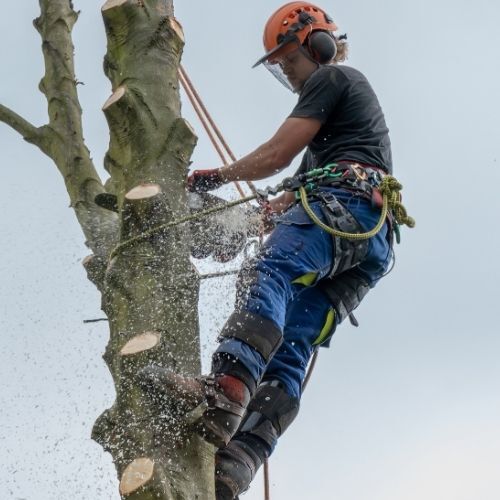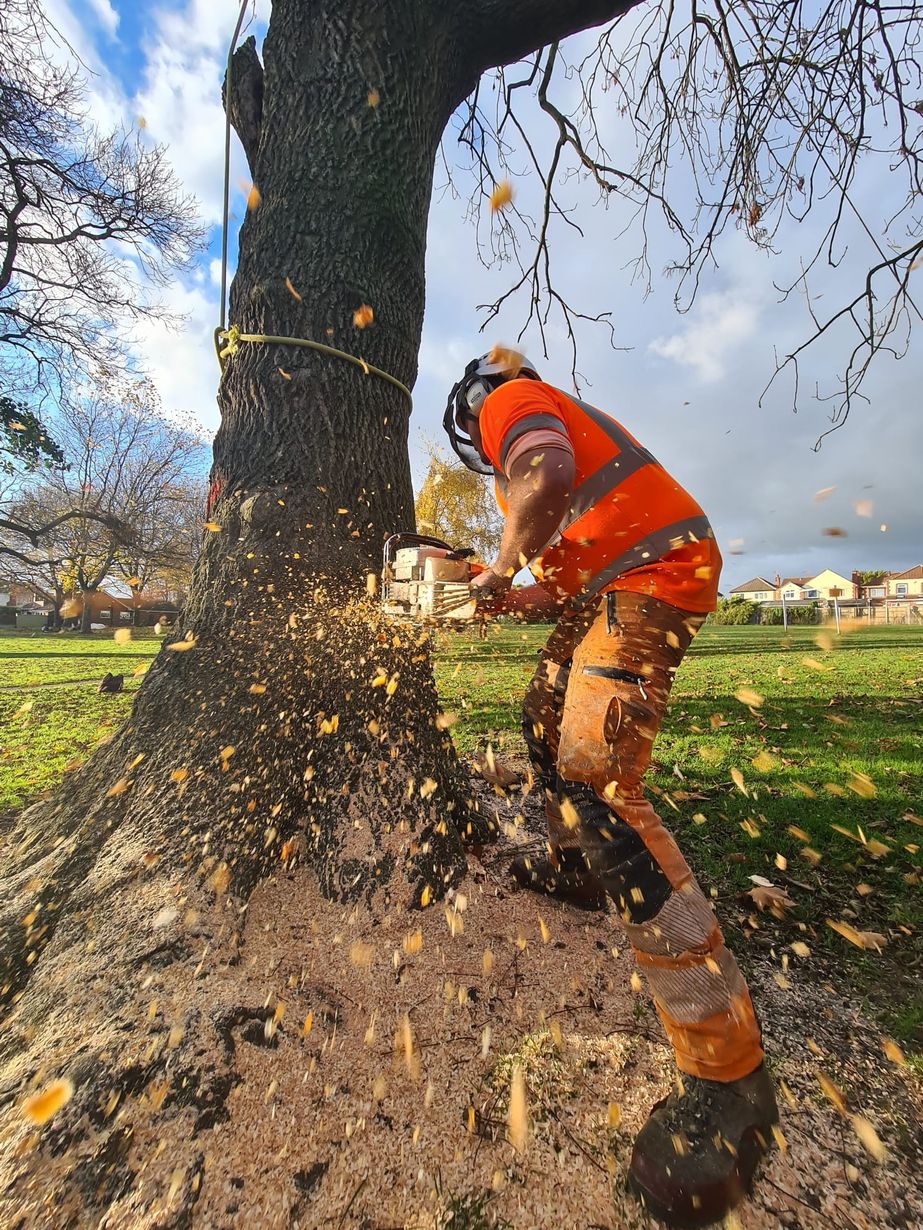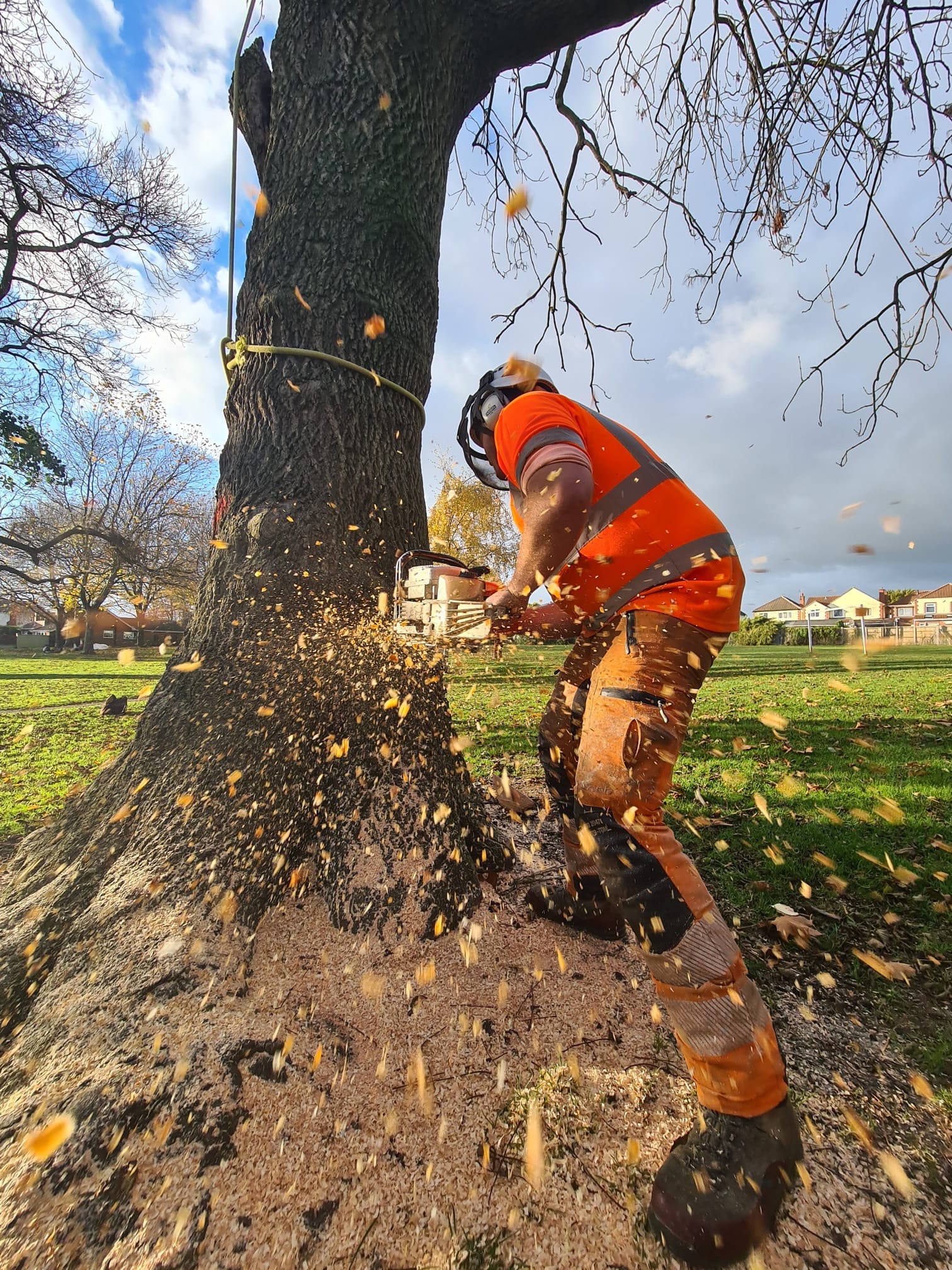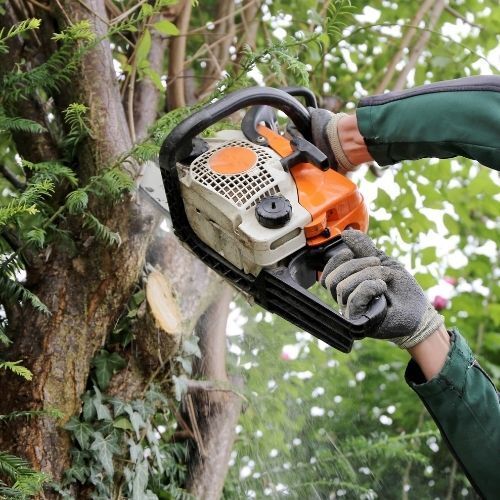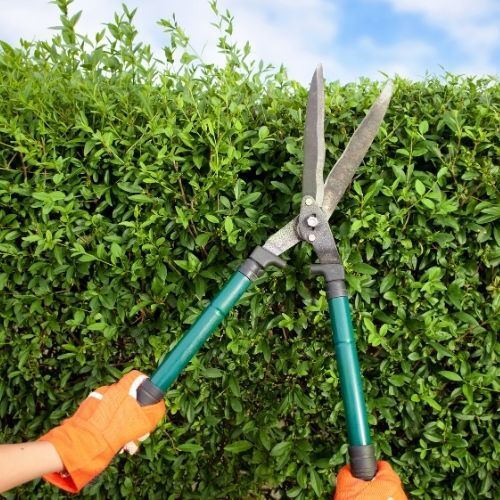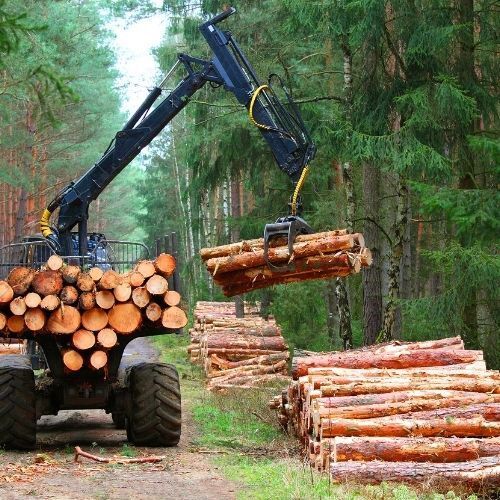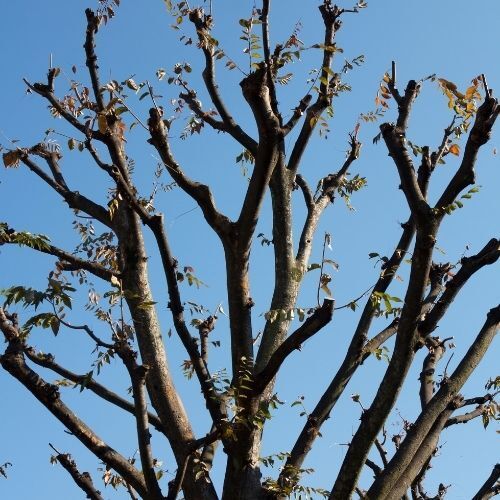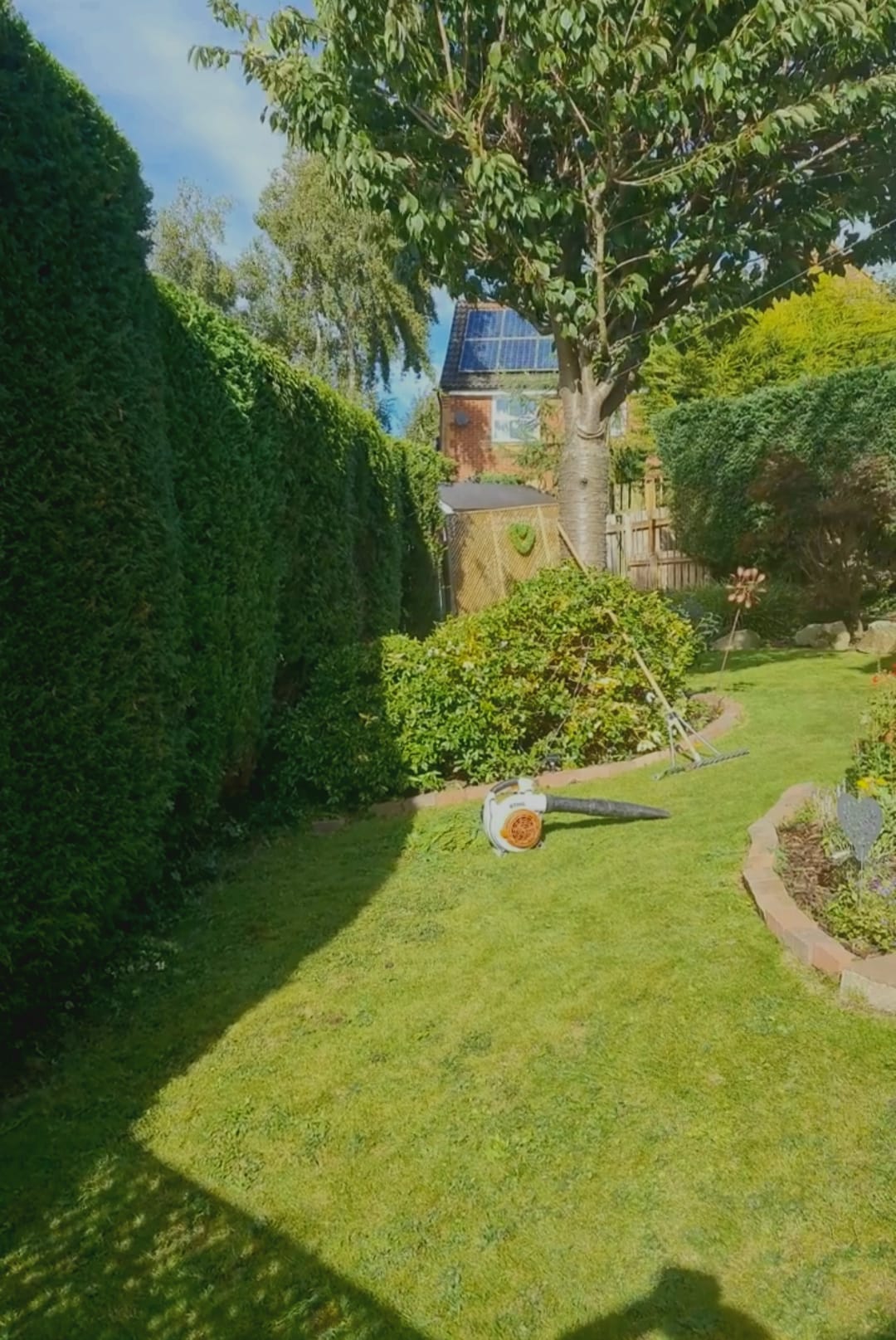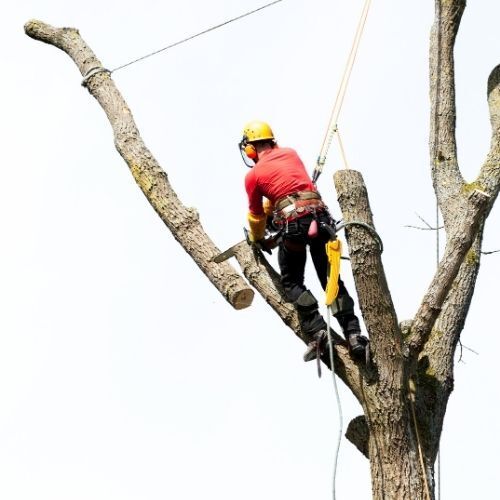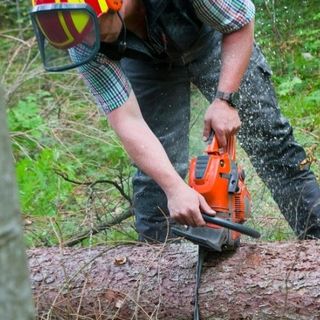January 1, 2023
Trees are an integral part of our landscape, providing various benefits to people and the environment. They provide shade, beauty, and habitat for wildlife, as well as help to improve air quality and reduce noise pollution. Additionally, trees can increase property values and provide economic benefits by producing fruit or other products. However, like any living organism, trees can experience health issues affecting their growth and survival. It is essential to regularly assess the health of your trees to identify any problems and take action, like hiring a tree service professional. Doing so can help ensure that your trees remain healthy and continue providing all of the benefits they offer. In this article, we'll discuss the five signs telling you that your tree at home is dead and our suggested corrective actions to handle them. No Leaves or Buds One of the obvious signs that a tree may die is the absence of leaves or buds. Alive and healthy trees will typically have leaves or buds, even if they are dormant in the winter. The presence of leaves or buds indicates that the tree receives sufficient nutrients and water and can photosynthesize and produce new growth. If you notice that your tree has no leaves or buds, the tree is likely dead. The tree could have a disease, insect infestation, or be affected by extreme weather conditions. Suppose you suspect that your tree is dead. In that case, it is essential to have it evaluated by a professional tree surgeon to determine the cause and the best course of action. In some cases, the tree may recover with proper care. Still, in other cases, tree removal may be necessary. So, it is always better to consult a tree surgeon or arborist before taking action. Brittle or Cracked Bark A tree's bark is its protective outer layer, serving as a shield against pests, diseases, and environmental stressors. When a tree is healthy, its bark will be smooth and flexible, allowing it to expand and contract as it grows. However, if the bark is brittle or cracking, it could indicate that the tree is in poor health or has died. Various factors, such as age, insect infestation, or disease, can cause brittle or cracked bark. It can also result from environmental stressors, such as extreme heat or cold, drought, or mechanical injury. If you see that the bark on your tree is brittle or cracking, it is essential to have an expert tree surgeon evaluate the tree. The arborist will determine the cause of the damaged bark and recommend the best action. One of the possible scenarios is that the tree service expert will guide you to have a tree felling for your dead tree. Fungal Growth Fungal growth on a tree can be a sign that the tree is dead or dying. Fungi typically grow on dead or decaying wood, feeding on the nutrients found in the wood. If you see signs of fungal growth on your tree, it could be an indication that the tree is no longer alive or is in the process of dying. Many different types of fungi can grow on trees, including mushrooms, bracket fungi, and conks. These fungi can appear in various shapes, sizes, and colours and can be found on a tree's trunk, branches, or roots. Contact your nearest tree surgeon immediately if you notice fungal growth on your tree. Discoloured Leaves Healthy trees should have green leaves, as the chlorophyll in the leaves is what enables the tree to photosynthesize and produce energy. If the leaves on your tree are discoloured or yellowed, it could signify that it is struggling or has died. Many factors can cause a tree's leaves to become discoloured, including disease, insect infestation, nutrient deficiencies, and environmental stressors. Suppose you notice that the leaves on your tree are discoloured. In that case, it is vital to have the tree evaluated by a tree surgeon to determine the cause. Suppose the tree is struggling but not yet dead. In that case, the tree surgeon may be able to recommend steps to help the tree recover, such as fertilization, watering, or pest control. However, if the tree is already dead, tree removal may be necessary. So, it is always better to consult a tree surgery expert. No New Growth A tree not producing new growth or shoots can signify dead or dying. Stable growth is essential to a tree's health and vitality. When a tree is healthy and receiving the nutrients and water it needs, it will typically produce new growth in the form of leaves, branches, and shoots. If a tree is not making new growth, it may lack the resources it needs to thrive, which can signify that it is no longer alive. It's important to note that there may be other reasons a tree is not producing new growth, such as environmental factors or damage to the tree. For example, a tree may not make new growth if it is experiencing prolonged periods of drought or if storms or other events have damaged it. In these cases, the tree may not be completely dead, but it may be in poor health and need additional care or attention. It's always a good idea to monitor your trees' health and be on the lookout for any changes or signs of distress. Suppose your tree is not producing new growth or appears to be dying. In that case, it's a good idea to consult with a tree service professional for further assessment and advice on how to proceed. Hiring a Tree Surgeon is Always a Good Idea It's essential to recognize the signs of a dead tree to ensure the safety and health of your property. It would be best to seek professional help if you notice any of these signs. Dead tree removal can be dangerous, and it's essential to have the proper equipment and expertise to do it safely. By regularly checking your trees and contacting Tree Surgeons Mansfield , you can help ensure your trees' health and safety and maintain your property's overall beauty and value.
